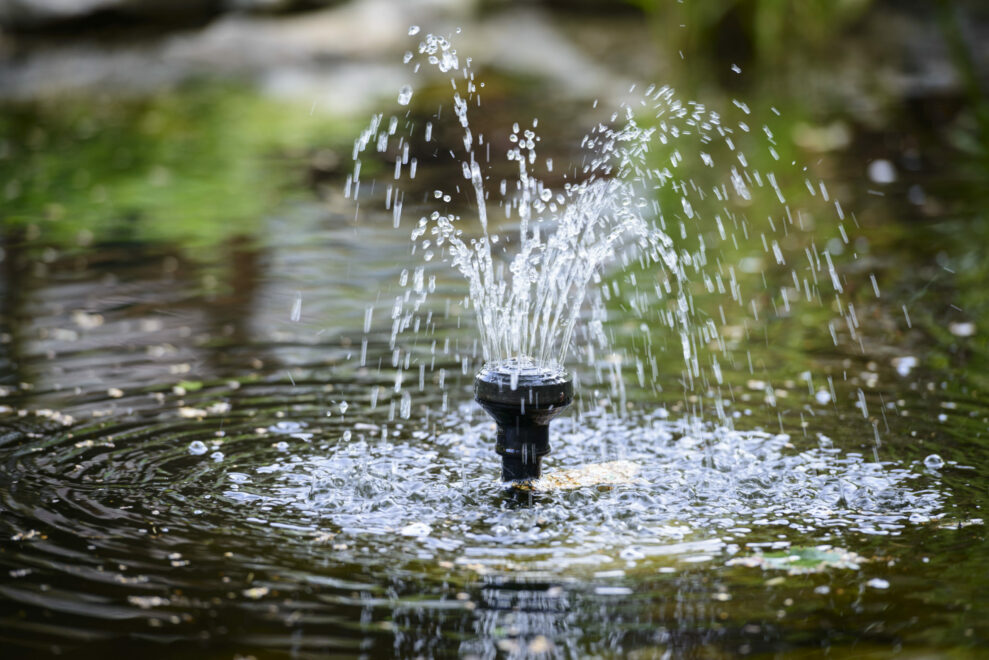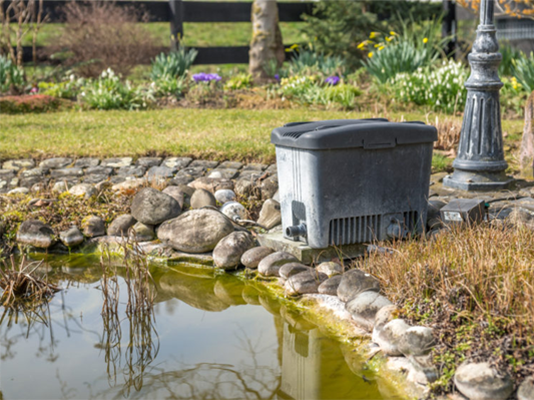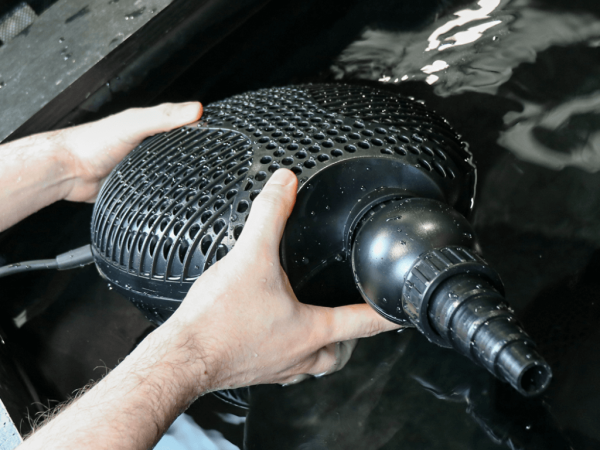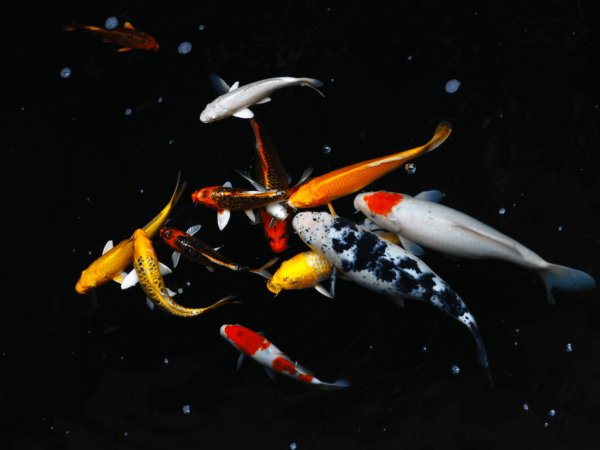Why Is My Pond Losing Water?
Sadly, this can be a tricky one as many pond owners have found out over the years. There are a number of different reasons as to why your pond water levels might be dropping, and getting on top of the situation ASAP is important to maintaining good depth.
The most important thing to remember is to keep your fish’s health and safety as your main priority – make contingency plans for where and how you will keep them should the worst come to the worst and you have to drain your pond to fix the problem.
Water Loss from Evaporation
This is an obvious one, and in the summer months the effect of the sun’s harsh rays can make a surprising difference to your water levels if left unchecked. Around 2 to 3 centimetres of water loss per in a week is quite normal as temperatures begin to rise, and most of the time the easy solution is to simply top your pond up. Make sure you use you run the water through a dechlorinator though – you wouldn't want any unwanted chemicals entering your pond ecosystem and disrupting it’s pH balance and other water quality parameters.
Water Loss From Water Features and Filtration
If you have a more significant water loss problem you need to check your moving water systems. Ensure that waterfalls and fountains are not positioned in a way that means a high proportion of the water does not return to the pond. If this is the case, you may wish to consider relocating the feature or turning it off (assuming that it doesn’t contribute significantly to a vital operation, such as aeration).
Check that you are not losing water from your pond filter or pipework, ensuring that there are no loose connections that are leaking and that your pond filter is not overflowing.
If you find that your pond filter is actually the problem, there are a few things you can do to fix this: check the sponges and filter media are not overly clogged. If they are, consider washing them in dirty pond water (to protect the beneficial bacteria cultures within them) or perhaps look at purchasing some new filter media.
If your filter-box is still overflowing, it could be that your pump is mismatched to your filter, providing it with more litres per hour than it can handle. If your pump has an adjustable flow valve you may want to turn it down a notch, however if water quality begins to suffer, it might be that your simply don’t have a big enough filter to handle your pond water (it should circulate the entire pond water about once every 1-2 hours), and you should consider getting a new pond filter.
If you are using a bottom-drain and you suspect this might be the issue, then you may have to want to start making preparations for a complete drain of your pond, allowing you to sort out the problem once you can access the bottom drain. Remember – the wellbeing of your fish is the most important thing, so make their safety your priority by finding a suitable temporary home for them that will last until the situation is resolved.

Still losing pond water…
At this point, having eliminated your water systems and simple evaporation as the potential problem, you are likely to have one of the more unpleasant issues, however don’t despair – they can be solved!
Check as much of the pond liner as you can, especially around the edges of your pond - it may be that a section has come away from the wall and simply needs securing again after water has poured over the top.
With all over potential causes eliminated, it looks like you have a rip, tear or puncture in your pond liner – sorry!
Your pond should not drain any lower that the position of the rip, so providing the damaged area is not at one of the deepest points then you can let your pond drain out a bit and then check carefully for any damage. Be vigilant, as a hole smaller than a garden pea can make a huge difference to water loss given enough time. If during this exercise your pond water gets too low, causing your fish become too exposed to birds and predators or not have enough room to live, you need to put your contingency plan into action and find them a temporary home.
Pond liner repair can be effective if you pay care and attention to it – use a good pond liner sealant for small rips and tears, using spare liner if needed. If the rip is large, you will need a new liner.
Should this be the case, it might be a good time to give your pond a complete overhaul. Dry out, re-render the pond shape and use a good rock sealant like Bondaglass to protect against potential future leaks. Consider placing a dedicated pond liner underlay to match your liner, as it could be that the absence of one was the cause of the original rip, although many pond aquarists have reported success in using carpet or sand instead.
If none of this works, it may be worth giving our pond experts a call on 0161 3514700 – They will be more than happy to help where they can.










My new home as a medium sized old sludgy garden pond, very overgrown with old iris and weeds. The level rises and drops dramatically. I wish to overhaul it, replant and work out how to keep the water level to a regular depth. I am unfamiliar as to pond care or how to sort it out, but have watched a bit of gardeners world and get the principals of planting and care.
Would you advise draining the pond and lining it? Please advise on the liner needed and cost per square meter. Do you sell or rent pumps?I would like to create some steps on the banks for planting as it seems quite steep and overgrown.
If I do this and line it and there are heavy winter rains, would the pond flood into the garden? I am unaware of how these things work!
All advice very welcome please
Kind regards
Hannah